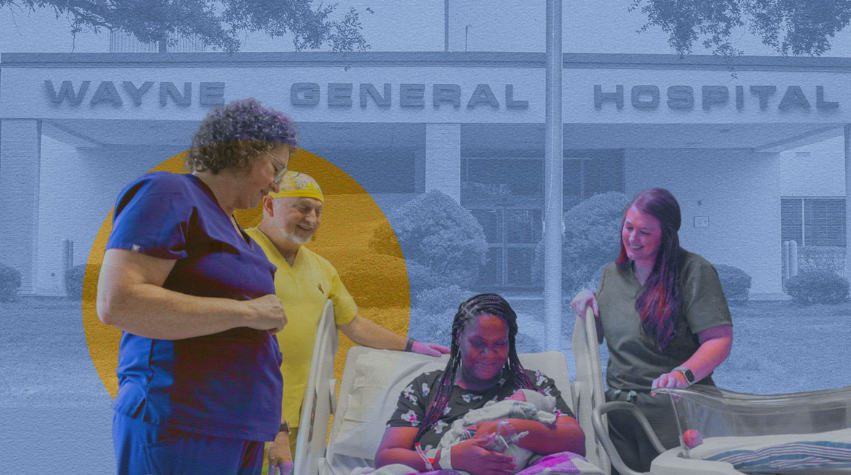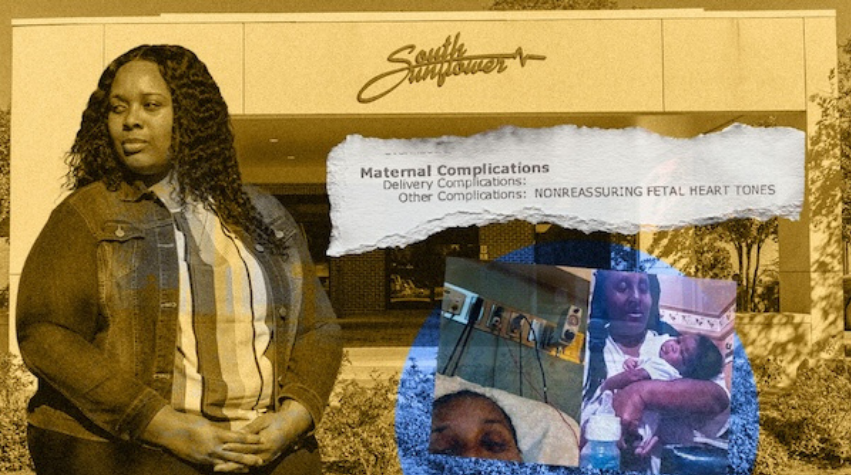Part II: In the state with the most C-sections, these hospitals are challenging the status quo
Three hospitals with some of the lowest use of low-risk C-sections in Mississippi vary in almost every way — location, size and type of providers who deliver babies.
Wayne General is a small, rural hometown hospital in eastern Mississippi. Baptist DeSoto is a large regional hospital just outside of Memphis. And Singing River is a mid-size hospital network in the southern coastal part of the state that boasts low rates at all three of its delivery locations.
But the providers at these hospitals all agree on one thing: birth takes time.
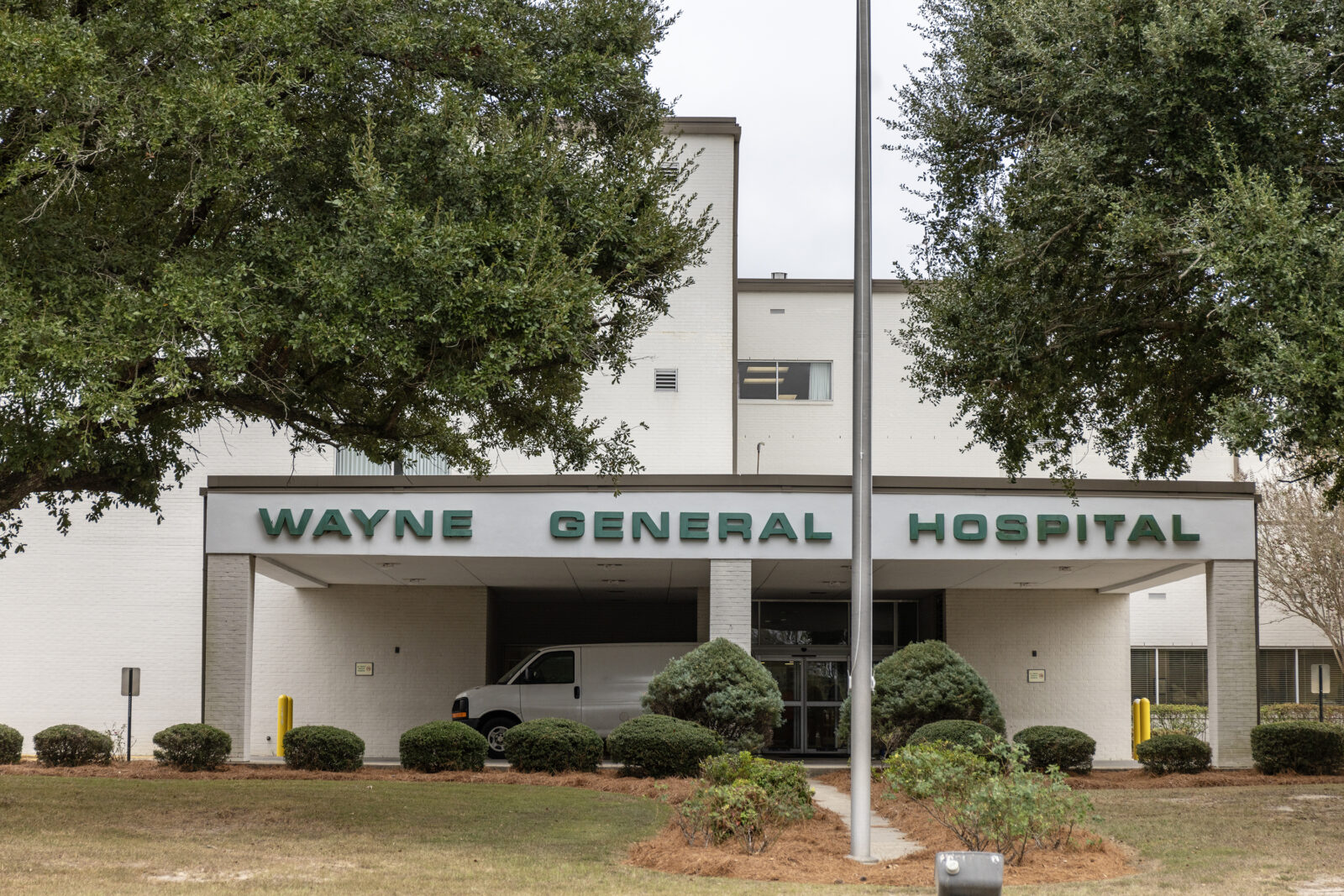
Their hospitals rank at the top for lowest rates of a particular kind of C-section referred to in the medical world as NTSV — which stands for nulliparous, term, singleton, vertex — meaning those occurring in first-time mothers who are full-term and having a single baby in the head-down position. These C-sections are often described as “low-risk cesareans.”
“I think we’ve all been rewarded by mamas who progressed, who we maybe didn’t think would, just by virtue of giving them more time,” said certified nurse midwife Cynthia Odom, who has worked at Wayne General for 30 years.
It’s rare enough to have a midwife on staff at a hospital in Mississippi, which has no midwifery certification programs after the University of Mississippi Medical Center terminated its program in the 1970s due to a lack of funding and support from physicians. But Wayne General is also one of only two hospitals in the state that uses family physicians trained in obstetrics in place of OB-GYNs — a workaround to the state’s severe shortage of these doctors.
Before they were joined by Dr. Allison Akridge in September, Odom and Dr. Kelvin Sherman worked side by side for decades, delivering all the babies in Wayne County — a small rural county with one hospital and 20,000 residents — and even some from maternity care deserts across the border in Alabama.
Odom and Akridge joked that every once in a while, they catch a video of Sherman running across the street from his house to the hospital for a delivery and it makes the rounds on social media.
“I think a lot of it has just been how available Dr. Sherman and Cynthia have been to our patients for years now,” Akridge said. “I mean, this has been their whole life, taking care of the pregnant population here.”
The hospital’s unique obstetric team has translated into a uniquely low use of C-sections. In 2022, just 14.3% of moms at low risk for a C-section received the surgery.
“You look at a vaginal delivery versus a C-section, there’s just more factors that can go wrong,” Sherman said. “Even though it’s never been safer to have a C-section in the history of mankind than it is now, we still try to strive for a routine vaginal delivery. And we give patients long enough in their labor.”
While many hospitals won’t let women go past 40 or 41 weeks of pregnancy and insist on a medical induction before then, Wayne General allows women to go up to 42 weeks — about two weeks past the typical due date — if they choose to.
Although a due date is just an estimate of when a baby will come, the risks of adverse outcomes increase the longer a woman goes past 40 weeks.
Part of what makes the team at Wayne General feel confident in the care they provide is the fact that they know their patients so well. They take care of patients well before pregnancy and long after birth for parents and baby.

“You know them, you have a good relationship with them and you’re just more patient, you’re really in tune with their history and their prenatal care, and it makes you less anxious about their care when you’ve been so hands-on with them,” explained Akridge.
Midwifery care has long been associated with improved outcomes, including a decreased chance of cesarean birth. But at Wayne General, what makes the midwifery model of care especially effective is the harmony between providers.
“I think there’s some midwife in my docs, and I think there’s some medicine in this midwife,” Odom said.
These three hospitals with some of the lowest use of C-sections in the state all utilize a reinvented midwifery technique called Spinning Babies, which allows laboring mothers to change positions on the bed even when an epidural may keep them from moving off the bed.
“It sounds kind of crazy, but really what it is about is getting the body into positions that open the pelvis and allow the baby to descend,” explained Lori Weimer, patient care manager in the labor and delivery unit at Singing River. “So, that prevents a lot of — especially [low-risk] — C-sections, where we just need to give that body some encouragement.”
Singing River has also implemented a program called “Team Birth,” where every mother delivering at the hospital gets to meet with her doctor and nurse to discuss her ideal birth plan, which providers try their best to follow. In the majority of cases, Weimer said, that’s possible.
“Labor is not a sickness, it’s not an illness,” said Weimer. “It’s a natural thing.”
Variation in low-risk C-sections from year to year is normal — and even good, because it suggests that the procedure follows individual needs, not routine or culture.
“We don’t like to focus on a number, because if you’re not hitting that number, it makes you feel like you may be doing something wrong. Our goal is to have a healthy mom and a healthy baby,” Dr. Harvey Mason, chief medical officer at Baptist DeSoto said. “We want to create the culture here at DeSoto that the expectation when a [first-time, low-risk] mom comes into the hospital is that we’re going to do everything we can to have a successful vaginal delivery.”
Today, nearly a third of deliveries use inductions — either medical or elective — to kickstart labor before it begins on its own. Elective inductions are those performed for non-medical reasons, due to provider or patient preference.
The American College of Obstetrics and Gynecologists recommends no elective inductions before 39 weeks.
Baptist DeSoto plans to go one step further and ban elective inductions before 40 weeks in 2025.
Dr. Alok Kumar, an OB-GYN at the hospital, emphasized the importance of choosing the right candidates for elective inductions and educating patients on the risks a failed induction can have.
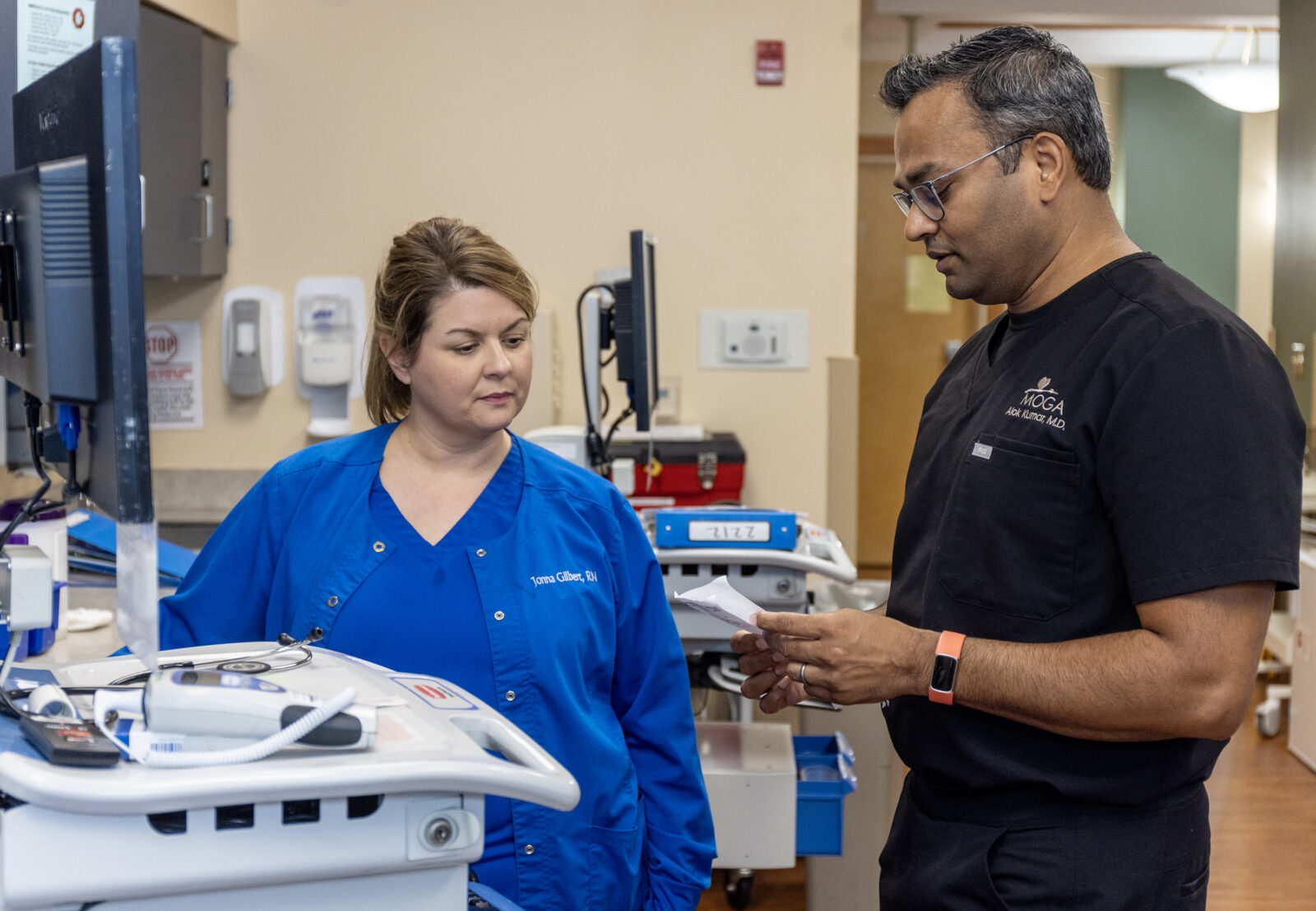
“It’s really important for us as physicians to guide a patient and say, ‘Okay, an induction before your body is ready is not necessarily the best thing and can significantly increase your risk of a C-section,’” he explained.
Whether elective inductions lead to more cesareans is a contested issue among doctors, explained Gene Declercq, the Boston professor whose research focuses on maternal mortality and morbidity.
“People feel strongly on both sides of that,” he said. “Some say you can do an induction to avoid a cesarean, and result in a vaginal birth. And others say, well, but failed inductions lead to cesareans.”
The research is still inconclusive. Much of the contention comes down to the interpretation of a study that came out in 2018 and suggested elective inductions in the 39th week decrease one’s chances of a C-section. But the study, called the ARRIVE trial, has been criticized for its methodology, Declercq explained.
Allison Doyle, the new midwife hired at Northwest Regional Medical Center, says that one study isn’t enough to warrant the pervasiveness of elective 39-week inductions in low-risk, first-time moms today.
“Throughout medical history, we’ve never changed our medical practice based on one study,” Doyle said. “And so I have a little bit of an issue with that, for one. Normally, it takes us 20 years and repeated studies, and you want those same outcomes repeated multiple times before you adjust.”
Solutions within reach: VBACs, midwives and culture
Being in a supportive environment is the best way to prevent an unnecessary C-section — and that goes for patients as well as doctors.
For patients, support can take the form of hands-on care with techniques such as Spinning Babies, emotional support from a doula, and being included in the decision-making process with doctors.
For doctors, support can look like a collaborative hospital culture where informed consent is incentivized and doctors receive the time they need to get to know patients, as well as guidance on how to better weigh risks and benefits.
But change will need to be systemic, experts say, and will need to address underlying health conditions that have made patients in the state more prone to undergoing surgical birth.
Doctors in the Delta say that the health conditions that plague the region contribute to a justifiably higher number of cesareans. But even for them, Mississippi’s number is too high.
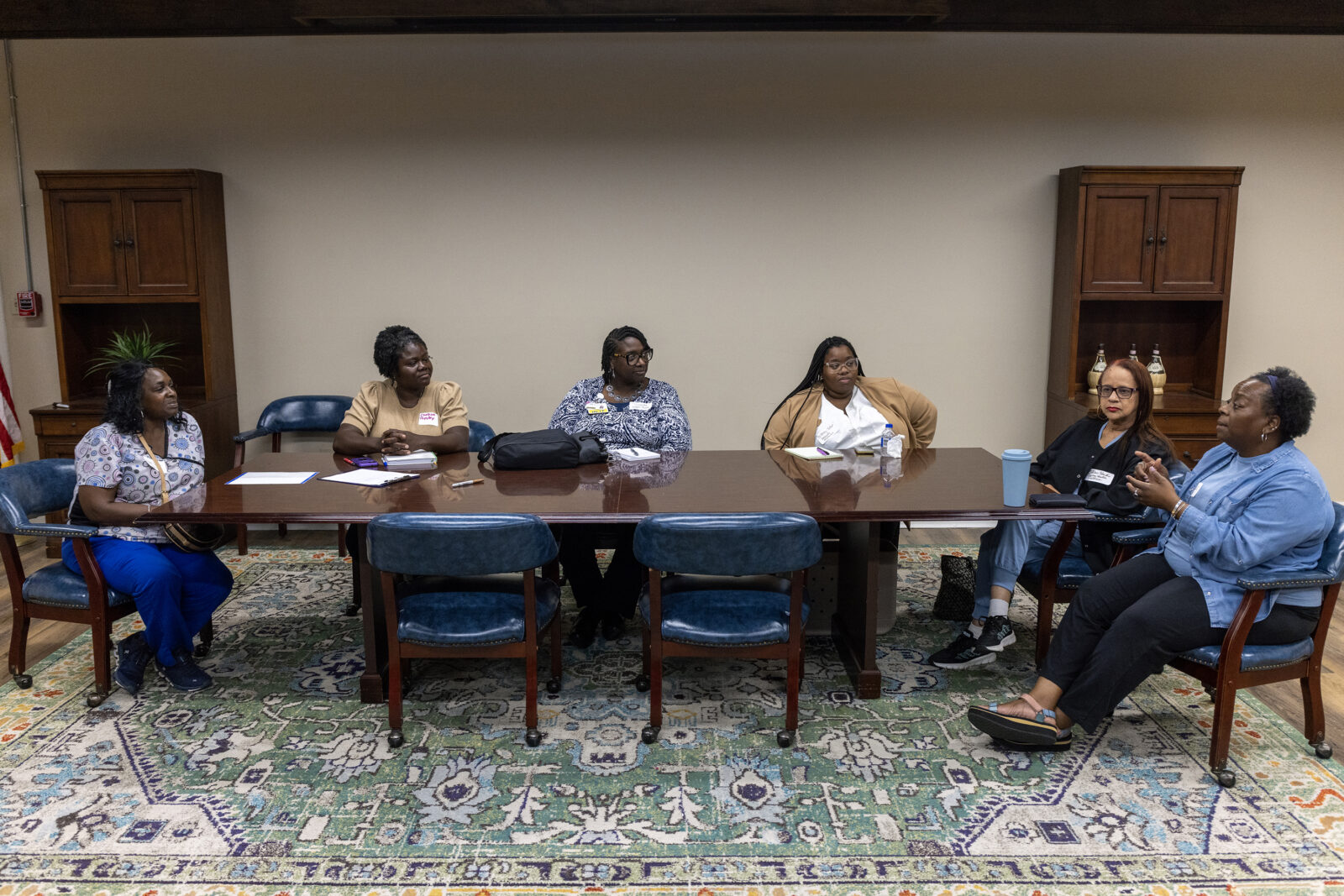
“It’s truly hard for me to say what the right number of C-sections would be,” said Dr. Nina Ragunanthan, an OB-GYN who works at Bolivar Medical Center in Cleveland, Mississippi. “ … It does still feel a little higher here than an ideal level. However, I also still do think it makes sense that Mississippi does have higher rates of C-sections than other states.”
These health conditions, such as diabetes, obesity and hypertension, are a result of decades of low social determinants that have weighed on the region, in tandem with a lack of investment in the health landscape of the state.
“To achieve a lower C-section rate across the state, we need to address the underlying factors that raise that rate so much,” Ragunanthan said. “That means increasing the OB-GYN and midwife workforce to improve access to quality prenatal care, increasing the number of hospitals that can safely offer VBACs (Vaginal Birth After Cesarean), and absolutely focusing on the underlying risk factors of obesity, hypertension, and diabetes that make C-sections more likely.”
There is renewed interest in addressing C-sections in Mississippi, though potential solutions like increasing midwifery care still face legislative hurdles.
On a Monday afternoon in late November, the Senate Study Group for Women, Children and Families held a six-hour meeting at the State Capitol in Jackson to hear from health care experts about priorities ahead of the 2025 legislative session.
Lt. Gov. Delbert Hosemann formed the group in 2022 following the Dobbs Supreme Court decision that overturned the constitutional right to an abortion.
Two speakers mentioned pervasive low-risk C-sections as a pressing issue. Dr. Catherine Brett, clinical medical director at the Mississippi Division of Medicaid, and Janice Scaggs, a certified nurse midwife at University of Mississippi Medical Center, both reiterated how the state’s pervasive surgeries contribute to poor health outcomes for mothers in the state.
Scaggs explained to lawmakers that the first-time population of women should be having the highest number of vaginal deliveries. Performing a cesarean affects not only that birth, but subsequent births, as well as the long-term health of the mother.
To keep C-sections low in this group of women, Scaggs recommended involving midwives in hospital birth.
“If we can support normal, healthy, term women with one baby head down —it’s the perfect population for midwives who are high-touch, lower-intervention, and only using intervention when necessary,” she said.
Scaggs was talking about certified midwives, of which there are several kinds including certified professional midwives and certified nurse midwives. In Mississippi, which has no midwifery certification programs, anyone can call themselves a midwife, but very few certified midwives exist.
In the last decade, lawmakers have proposed bills aiming to shore up midwifery care in the state — with no success.
Mississippi has a long way to go in moving the needle on social determinants, health risks and a reliance on surgical birth. But in the meantime, doctors have the opportunity to shift the way they work with patients who have had prior C-sections.
Once a primary C-section has been done, the best thing doctors can do is support vaginal births for later pregnancies in women for whom it’s safe to do so, Scaggs said. These are referred to as vaginal birth after cesarean, or VBAC, and Mississippi has the lowest rate of these deliveries in the country.
Dr. Amber Shiflett, an OB-GYN at the University of Mississippi Medical Center and known to moms in the greater Jackson area as “the VBAC queen,” stressed the importance of picking the right candidates. That’s because while VBACs in the right patients reduce morbidity and mortality, they can be catastrophic when performed on the wrong candidates.
“Babies do best after a successful vaginal birth after C-section, but then the next best neonatal outcome is just with a repeat C-section, and then the third on the list is a failed trial of labor after C-section,” or letting a mom labor with the goal of a vaginal birth but ending up with a C-section.
Mothers who don’t make good candidates for a VBAC are: those who had their first C-section due to a condition that is likely to recur; are older; have had multiple C-sections; or are pregnant with multiple babies, she explained.
Those who are most likely to be successful are: mothers who had a first C-section due to a problem that is unlikely to recur; are under 35; only had one former C-section; and are pregnant with one baby. The incision of the first C-section also matters — those who had a low incision can more easily have a successful vaginal birth than those who had a higher incision.
In October, Jennifer Sloan-Ziegler — the Ridgeland, Miss. mom who underwent a low-risk C-section in 2020 – gave birth to her second child with a VBAC at the University of Mississippi Medical Center. Several medical students crowded around her in the delivery room – they wanted to witness the VBAC because they had never seen one before, she said.
Sloan-Ziegler says she was resigned to the fact that she might need to have another C-section. The biggest difference for her between her two births was the way she was included in the decision-making process during her second birth. She had a doula present throughout her labor, and she had long discussions with her care team about her treatment at every turn.
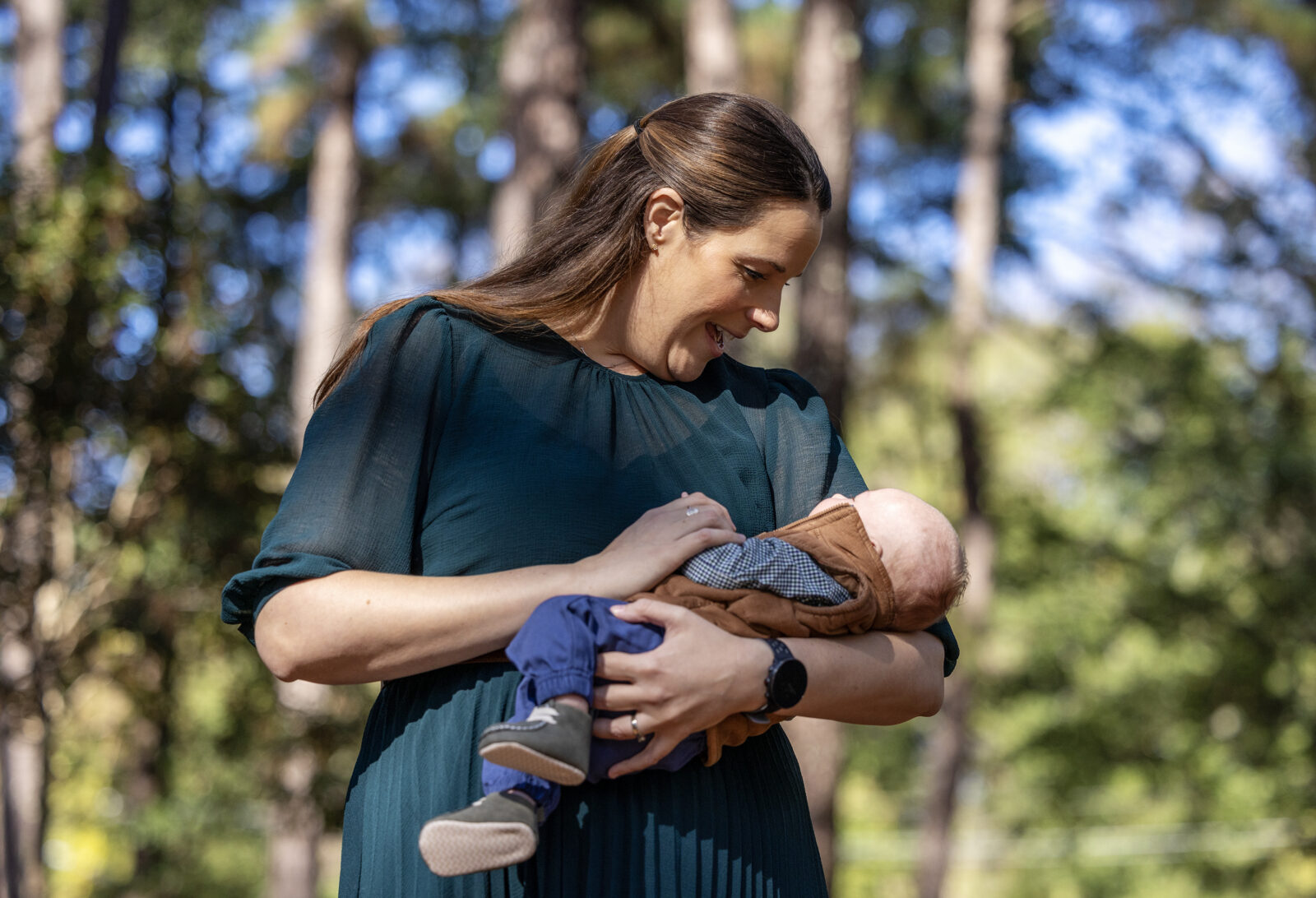
Following her first traumatic birth, Sloan-Ziegler blamed herself.
“I was so angry at myself, and it took a long time to realize that yes, there were things I could have done differently, but ultimately the reason I was feeling the way that I was feeling was because I was so disempowered in that whole situation,” she reflected.
Her postpartum experience has been worlds smoother and easier this time around, Sloan-Ziegler says.
“Changing the language from ‘This is what we’re doing’ to ‘This is what we’d like to recommend’ … even that small tweak in language makes a huge difference in how a woman feels her opinion is being respected,” she said.
This two-part story is a collaborative reporting partnership between Mississippi Today and The Fuller Project. Mississippi Today, winner of the 2023 Pulitzer Prize for Local Reporting, is the state’s flagship nonprofit newsroom whose mission is to hold the powerful accountable and equip Mississippians with the news and information they need to understand and engage with their state.
Read the first story:


 Sophia Paffenroth
Sophia Paffenroth